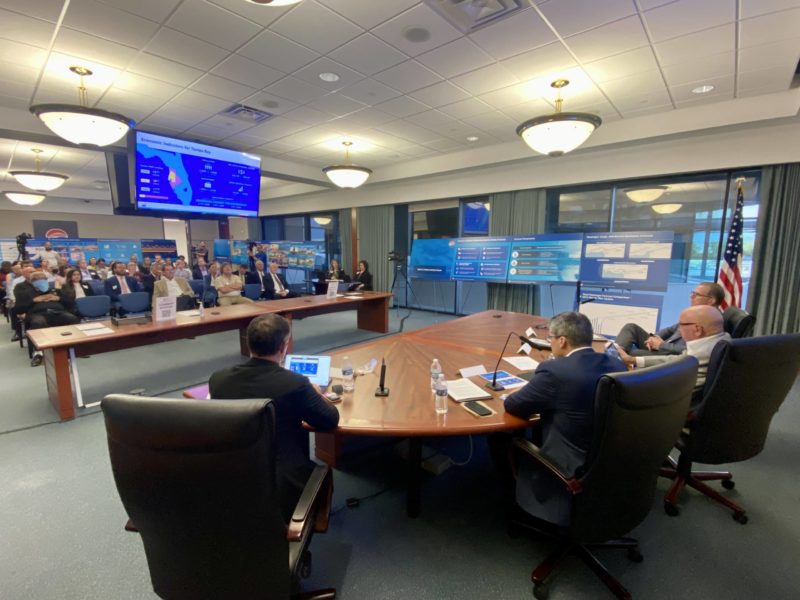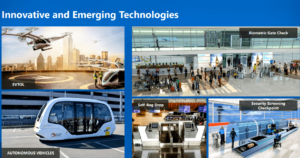Know
TPA officials talk dramatic growth, eVTOLs in master plan update

Tampa International Airport (TPA) expects to see an exponential increase in passengers over the next two decades, nearly doubling the number of fliers from 21.2 million this year to 38.8 million in 2042.
Airport officials presented their latest post-pandemic forecasts Monday night as part of TPA’s 2022 Master Plan update. The meeting was the first of three public forums on the airport’s long-term plans and expectations, and officials hope to gather community feedback to help shape the two-year process.
According to statistics provided by TPA’s aviation consulting firm, Ricondo & Associates, the trajectory of passenger growth looks nearly as steep as a plane taking off from the airport’s runway. TPA background data shows passenger levels have already reached pre-pandemic levels and will surpass 2019’s record of 22.1 million next year. Jeff Siddle, vice president of planning and development for TPA, told the Catalyst those projections highlight the need for expansion – including a planned new airside terminal and possibly a new runway.
“We’ll have a need for additional gates,” said Siddle. “Right now, we have 58 … and we’ll need another airside that will bring 16 more gates.”
Siddle added that additional expansion would occur in a plot of property the airport owns north of the current campus, in what TPA officials call the North Terminal Development Area.
“That’s where a duplicate facility of what you see today will be plopped [sic] and developed later on … when the airport and the community continue to grow,” he said. “We feel good about having enough real estate to accommodate the needs for growth.”
According to TPA data, the airport’s passenger activity is recovering faster than the national average. The number of monthly departing passengers increased by 102% since the pandemic began, compared to an average increase of 90.6% for the rest of the county. TPA’s current traffic is now 6.3% above pre-pandemic levels.
Operating revenues are also soaring. TPA projects $296.3 million in revenue for this fiscal year, compared to the previous record of $271.7 in 2019.

Jeff Siddle, vice president of planning and development for TPA, said the airport is engaging with electric vertical take-off and landing (eVTOL) aviation companies. Screengrab.
Part of the airport’s growth includes planning for future technological advances in transportation, such as electric vertical take-off and landing (VTOL) vehicles used for emissions-free taxi and regional services. The Tampa Bay Regional Transit Authority (TBARTA) has held talks with various eVTOL companies since receiving a state grant in 2019 that allocated $1 million to study the innovative technology.
In September 2021, former St. Pete Mayor Rick Kriseman told his colleagues at TBARTA that he engaged in talks with Lilium – a Germany-based eVTOL company building its first U.S. vertiport outside of Orlando. Siddle mentioned Lilium and said eVTOLs and autonomous vehicles are technologies TPA is also planning for and including in its latest master plan.
“By the end of this year, our planning consultants … will help guide us as to where that operation should be located,” he said. “And we’re engaged in that industry right now.”
Siddle said he was pleased by the turnout for the first public master plan update, which drew over 100 community participants online and in person. He said airport officials and consultants would continue working behind the scenes over the next four or five months – and collect feedback through the process – in preparation for the next meeting in the fall.
“That’s why you should do these every five to 10 years,” said Siddle. “Because so much – particularly given the pandemic – so much has changed, and technology will continue to change.”
While airport officials could adjust the proposed agenda for the second of the three planned meetings, Siddle said the need for more gates is the focus of the fall forum. The third meeting will occur in the spring of 2023, and TPA will submit its final implementation plan to the Federal Aviation Administration (FAA) late next year.
To learn more about Tampa International’s master plan, visit the website here.








Hugh Hazeltine
May 1, 2022at7:44 am
When a helicopter loses engine power it can use the energy stored in the mass of its turning rotors to descend to a soft touchdown, called an autorotation. When an airplane looses engine power it can be guided during the glide to an open area or in our case the water. But an eVTOL will come down and accelerate until it encounters the ground. Both investors and passengers are at risk.